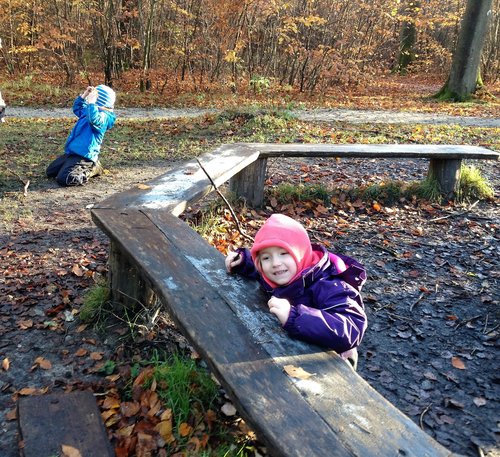ASPPIN explores how experiences in nature can stimulate a playful imagination, interaction and cognition among children. The project studies cultural learning processes through the concepts of convergent and divergent thinking in relation to children’s play in nature. The project, led by Theresa Schilhab and Gertrud Lynge Esbensen in collaboration with Richard Dewhurst, examines forms of spontaneous play without artefacts among children who are more or less accustomed to spending time in nature. The project is supported by PlayTrack.

A total of ten days of observations were conducted in a Danish forest comparing the play of four groups of children, two groups aged 3-4 and two groups aged 5-6. The working hypothesis is that the children’s familiaríty with nature will be reflected in the way they interact with nature and with each other during play. Furthermore, nature is expected to stimulate more open and divergent thinking through play; for example, through more extensive creative and associative interactions, and through more concrete interactions with their surroundings.
The groups of children (each comprising 10-20 children) were recruited either from kindergartens are either primarily city-based (where children have limited experience of excursions in nature) or from so-called nature or forest kindergartens (where children spend a substantial amount of time in nature). The children were accompanied by the regular staff at their kindergarten and were divided into the groups they were accustomed to from the kindergarten. They spent time and played in specially selected areas of a Danish forest with varied vegetation and changing terrain. Adult intervention was minimal.
During the days where observations were conducted, some of the children were, for a short period, equipped with Gopro cameras and Dictaphones during play, with the purpose of compiling first-person data. The cameras were fitted so as to follow the direction in which the children were looking. A special element in the collection of data was the degree to which technology (the Dictaphones and cameras) became part of the children’s play.
